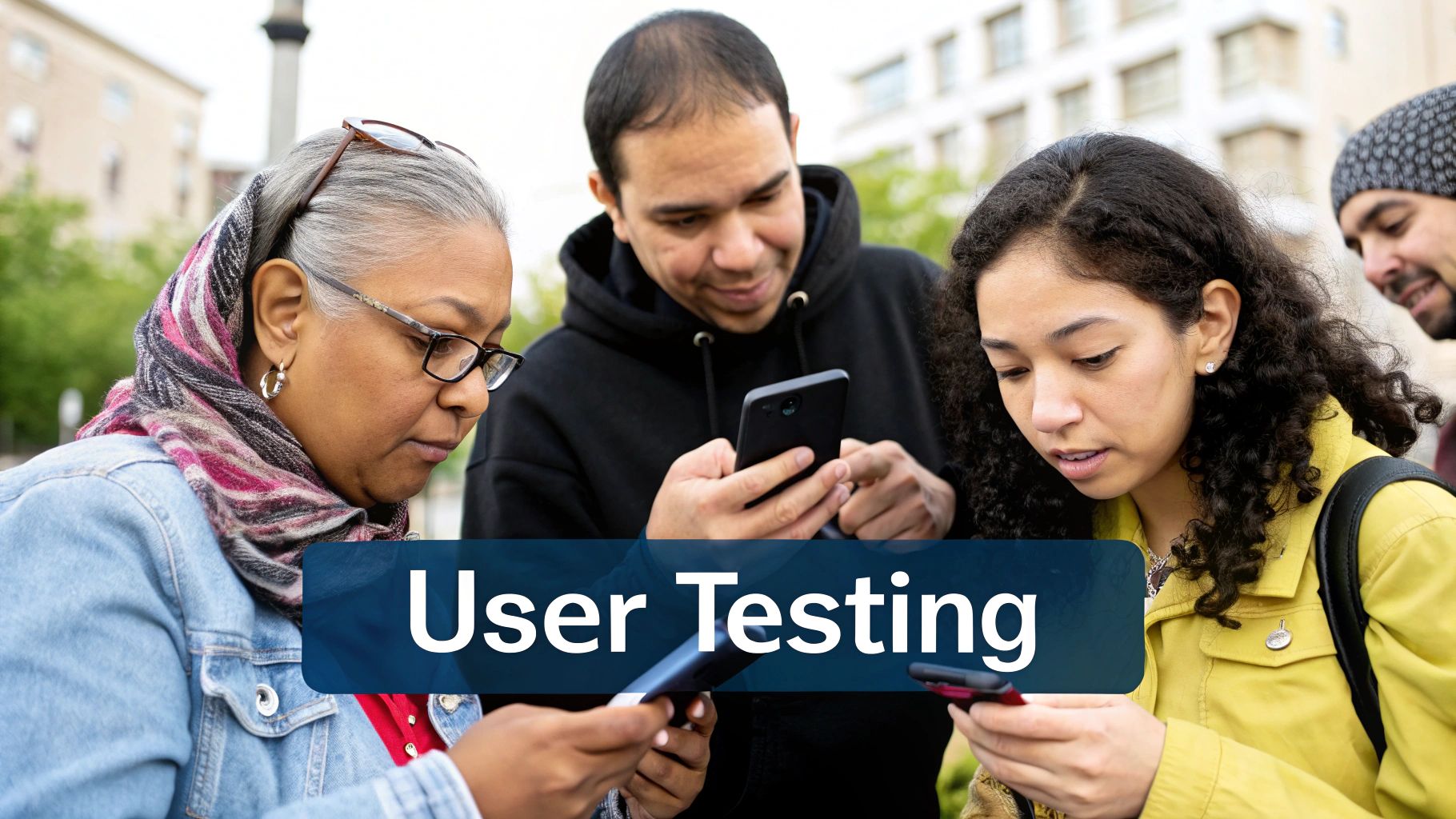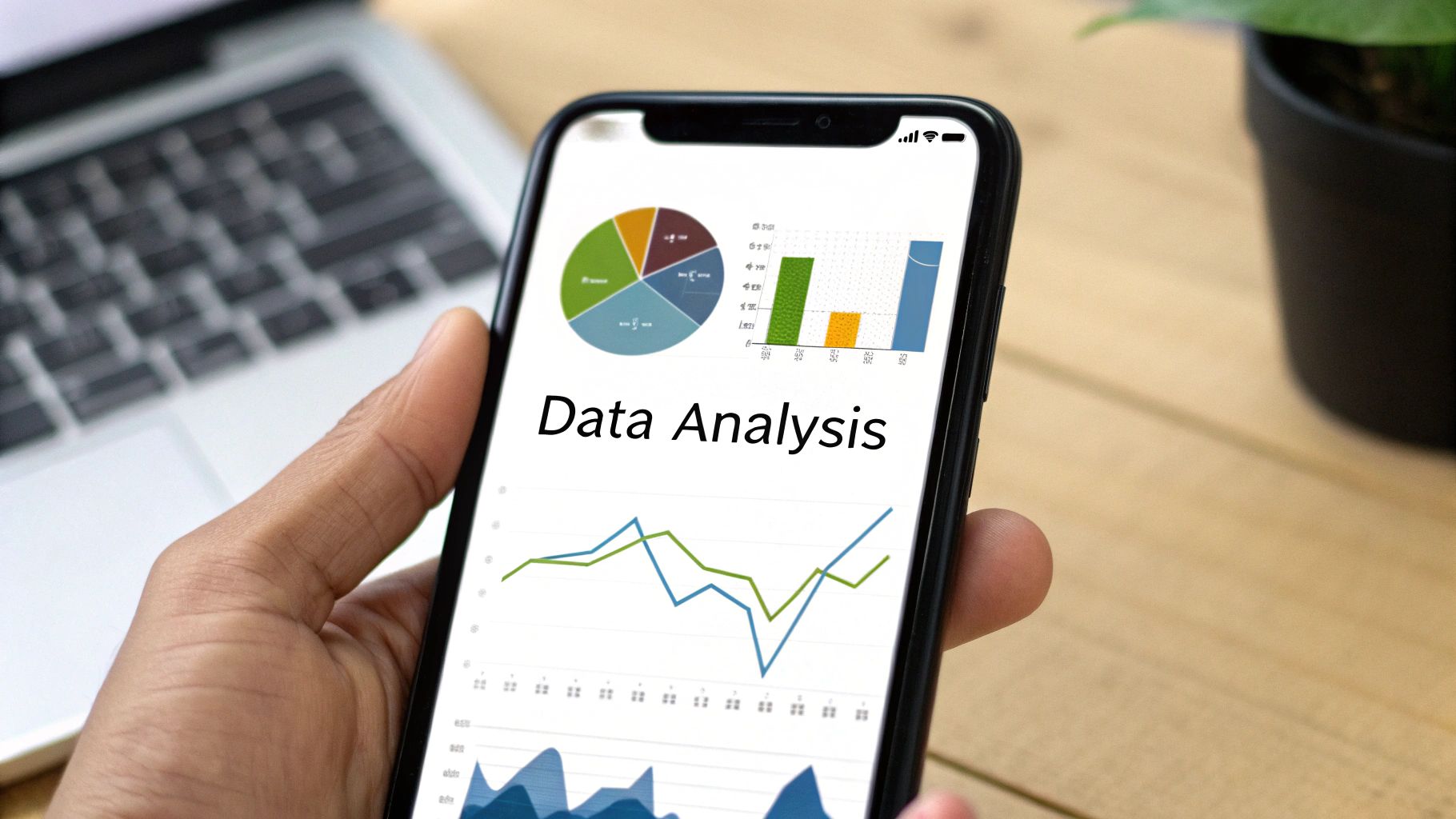Complete Mobile App Development Roadmap: A Strategic Guide to Success
Understanding the Mobile App Market Dynamics

Creating a successful mobile app requires deep knowledge of how the market works. This means studying current trends, understanding what users want, and finding the best ways to generate revenue. It also involves identifying growing market segments and learning from successful app developers who have already proven their approach works.
Analyzing Market Trends and User Expectations
Today's app users look for smooth, personalized experiences and solid performance. They want apps that look good and work well across all their devices. The rise of short-form video content shows how quickly user preferences can shift. By tracking these changes in user behavior, developers can make better decisions throughout the app creation process.
Identifying Revenue Opportunities and Growth Niches
Your money-making strategy needs to match both what users want and what's working in the market. While in-app purchases, subscriptions, and ads are common ways to earn revenue, you need to choose the right approach based on your target users and what your app does. Look for untapped opportunities in specific user groups or new technologies like AR to build a dedicated following.
Learning From Successful Developers
Experienced app creators offer valuable lessons about succeeding in the mobile market. They provide practical advice on testing ideas, building teams, and avoiding common mistakes. Many successful developers stress starting with a basic but working version of your app to test core features and get early user feedback. The mobile app market is expected to reach $585.70 billion by 2025, showing a 9.28% growth from 2024. Looking further ahead, the market could hit $781.70 billion by 2029, potentially growing to $836.15 billion. In-app purchase revenue is projected to reach $198.70 billion, while advertising could generate $381.30 billion. Learn more about market trends in this detailed analysis. Remember that understanding the market isn't a one-time task - it requires constant attention and adjustments to stay competitive.
Crafting Your App Development Strategy
A well-planned mobile app development roadmap guides your project from initial concept through successful launch. The key elements include validating your core concept, managing resources effectively, and assembling the right team. These fundamentals determine success in the dynamic app market.

Validating Your App Concept and Conducting Market Research
Before starting development, test your app concept thoroughly. Market research helps identify competitor apps, understand target audience needs, and spot current trends. Study what users like and dislike about similar apps to find opportunities for improvement. You might find this helpful: How to master software requirements gathering. This research shapes your mobile app development roadmap and improves your chances of success.
Defining Your Target Audience and Building Your Team
Create detailed user personas that capture your ideal users' demographics, interests, pain points, and motivations. This information helps tailor features and user experience to meet specific needs. When building your development team, focus on proven experience in mobile app development and ensure technical skills match project requirements.
Creating Realistic Timelines and Budget Planning
Break down your mobile app development roadmap into clear, manageable milestones. This approach makes progress tracking easier and helps spot potential issues early. Careful budget planning prevents cost overruns and keeps the project financially sound. Consider development costs, marketing needs, and ongoing maintenance. Recent statistics show 6.3 billion smartphone users and 1.14 billion tablet users worldwide. App downloads exceeded 218 billion in 2024, showing a 7% increase from the previous year. Users typically access 10 apps daily and 30 apps monthly, spending 88% of their mobile time in apps. See more stats here.
Assessing and Mitigating Risks
Every mobile app development roadmap needs thorough risk assessment. Plan for technical challenges, market changes, and competitor moves. Taking a proactive approach to potential issues makes your project more resilient and increases long-term success chances.
Selecting Your Development Path

Making the right choice between development approaches affects your mobile app's success. The decision between native, hybrid, and cross-platform development shapes your project's timeline, costs, and ability to grow. Let's explore the key differences between these methods and how they match different business needs.
Native App Development
Native apps use platform-specific programming languages - Swift/Objective-C for iOS and Java/Kotlin for Android. This approach delivers top performance and full access to device features. For instance, games with demanding graphics work best as native apps. The main drawback? You'll need separate code for each platform, which takes more time and money.
Cross-Platform App Development
With frameworks like React Native, Flutter, and Xamarin, you can build apps for multiple platforms using one codebase. This means faster development and lower costs. Plus, updates and fixes are simpler with a single codebase. The trade-off is that complex apps might not perform as well as native ones.
Hybrid App Development
Hybrid apps blend web and native technologies - essentially web apps in a native wrapper. This method enables quick development and code sharing across platforms. It works well for simple apps but may lack the smooth feel of native apps and face performance limits.
Choosing the Right Path for Your Project
Your choice depends on specific needs. Pick native development when you need excellent performance, full device features, and platform-specific design. Go with cross-platform when you have budget constraints and can accept some performance trade-offs. Choose hybrid for content-focused apps or quick prototypes. Read more about development paths in this guide: The complete guide to the mobile app development lifecycle.
Evaluating Frameworks and Tools
Look past the popular buzz around different tools. Focus on practical factors: community support, documentation quality, ease of use, and long-term stability. Consider your team's skills and how much maintenance your project will need. This practical approach helps create a sustainable development plan.
Mastering User Experience Design
Creating an excellent mobile app development roadmap starts with understanding user experience (UX) design. Good UX design turns basic app features into experiences that users love and want to return to. This requires applying proven design principles while deeply understanding how users think and behave.
Crafting Intuitive Navigation and Engaging Interactions
Good apps make navigation feel natural and effortless. Think of your app like a well-organized store - users should find what they need quickly without getting confused. Use familiar elements like tab bars and clear menus that make sense to users. Small details matter too - smooth animations and instant feedback when users tap buttons can make the experience much more enjoyable.
Optimizing for Different Platforms and Ensuring Accessibility
iOS and Android users expect different things from their apps. Each platform has its own style and navigation patterns that feel familiar to its users. Making your app work well on both platforms means following their unique design guidelines. Don't forget about accessibility - features like screen reader support and adjustable text sizes help everyone use your app comfortably.
Balancing Aesthetics and Performance in Mobile App Development
While an attractive design catches users' attention, the app needs to work smoothly too. Even the most beautiful app will frustrate users if it's slow or crashes often. Top developers carefully balance visual appeal with technical performance. This means writing efficient code and choosing the right images and effects that won't slow things down.
Understanding Your Target Audience and Creating Resonant Interfaces
Great interfaces come from really knowing your users - their needs, challenges, and how they use technology. Look beyond basic demographics to understand what motivates them and what problems they're trying to solve. Including user research and testing in your mobile app development roadmap helps create an app people connect with. Real examples show how small UX improvements, like simplifying a signup form or reorganizing a menu, can dramatically increase how often people use your app.
Conquering Global Markets

Taking your app into new international markets creates major opportunities for business growth. A good mobile app development roadmap should plan for international expansion from the start - this means more than just translation. You need to adapt your app to connect with different cultures while meeting various regulations.
Understanding Regional Differences and User Preferences
User preferences and cultural norms change significantly between regions. Simple things like colors, images, and interface elements can mean very different things across cultures. For example, a color that represents good fortune in one country might be associated with grief in another. Success requires research into local payment systems and privacy rules.
Localization and Cultural Adaptation in Your Mobile App Development Roadmap
Good localization involves more than word-for-word translation. You need to adjust the entire user experience to fit the target culture - from core features to content. Review all app elements including icons, visuals, and messaging tone to match local customs. Work with experts from each region to ensure cultural accuracy and avoid mistakes.
Technical Considerations for Global Deployment
Going global requires careful technical planning. You'll need servers that perform well in different regions and support for multiple character sets and languages. Consider how you'll handle updates and customer support across time zones.
Navigating Regulatory Requirements and Legal Frameworks
Every country has unique rules about data privacy, app content, and online transactions. Research regulations in each target market as part of your mobile app development roadmap. You may need specific security measures, licenses, or feature changes to meet local laws. Growth patterns vary by region - Mexico, the Philippines, and Saudi Arabia show install growth of 21%, 25%, and 30% respectively, while established markets like the US, UK, and India see 1-3% growth. See detailed data here. Understanding these trends helps developers target high-growth markets while maintaining presence in mature ones. Success requires staying flexible and adaptable.
Launching and Scaling for Success
A successful app launch requires thoughtful planning and ongoing optimization for long-term growth. The launch phase focuses on building momentum, optimizing your app store presence, and implementing strategic user acquisition strategies.
Building Pre-Launch Momentum and Generating Excitement
Getting users excited before launch helps drive early adoption. Focus on establishing a strong social media presence, engaging with potential users in relevant online communities, and using email marketing to build anticipation. Offering early access and beta testing creates valuable feedback loops while building a core group of enthusiastic early adopters. This is also the perfect time to connect with influencers and media contacts in your app's niche.
Optimizing Your App Store Presence for Maximum Visibility
Your app store listing creates critical first impressions. Write compelling descriptions highlighting key benefits, incorporate relevant search keywords, and showcase your app with high-quality screenshots and videos. A well-crafted app store presence significantly boosts discoverability and downloads.
Implementing Effective User Acquisition Campaigns
Growing your user base requires testing multiple acquisition channels like paid ads, content marketing, social media, and app store optimization (ASO). Track campaign performance metrics to understand what drives results and refine strategies over time. Learn more about risk management in our article on how to master software project risk management.
Gathering and Analyzing User Feedback: The Key to Continuous Improvement
After launch, user feedback becomes essential for ongoing enhancement. Add in-app feedback tools, monitor reviews, and engage with users on social platforms to identify improvement areas. Let user data guide your development priorities.
Scaling Your Infrastructure and Maintaining Quality
As usage grows, your technical infrastructure must scale accordingly. This includes expanding server capacity, databases, and backend systems. Maintain rigorous testing and QA processes to ensure performance and stability under higher loads.
Measuring and Improving Key Performance Indicators (KPIs)
Track critical metrics like user retention, engagement rates, and customer lifetime value to gauge success. These data points highlight what's working well and where to focus improvements. Regular KPI analysis helps optimize both development and marketing efforts.
Ready to bring your app idea to life? Hyathi Technologies provides expert guidance throughout the mobile app development process. From strategy and design to development and scaling, we help build successful, user-focused applications. Contact us today to discuss your app development goals.